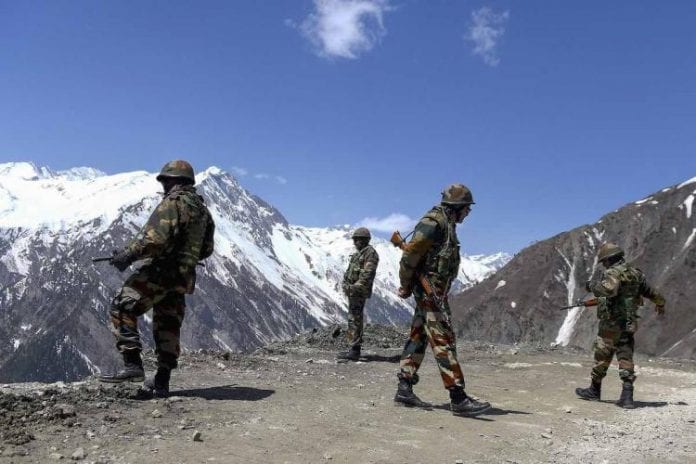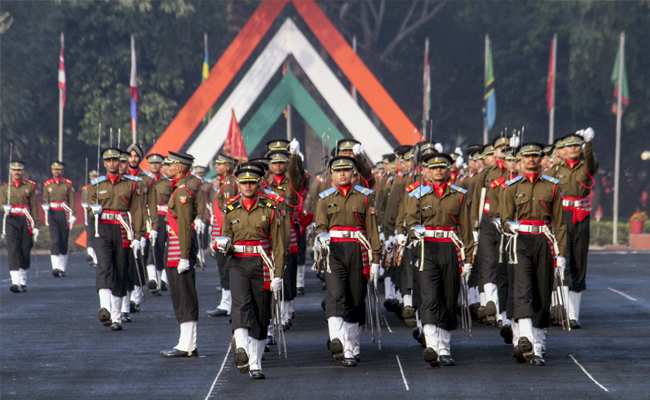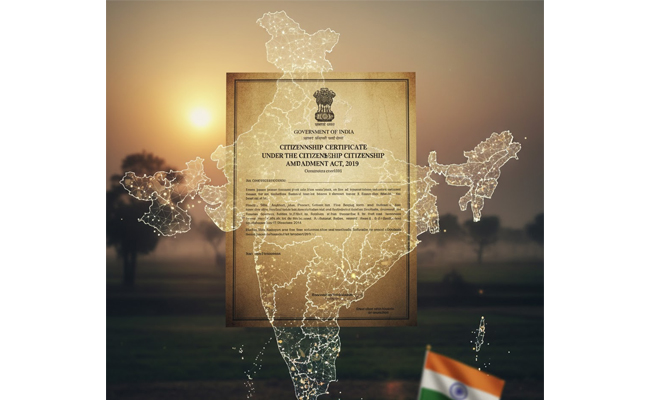Beijing, Feb 19: Five Chinese military officers and soldiers were killed in last year's Galwan Valley clash in eastern Ladakh with the Indian Army, the People's Liberation Army (PLA) officially acknowledged for the first time on Friday.
Five Chinese frontier officers and soldiers stationed in the Karakoram Mountains have been recognised by the Central Military Commission of China (CMC) for their sacrifice in the border confrontation with India, which occurred in the Galwan Valley in June 2020, the PLA Daily, the official newspaper of the Chinese military reported on Friday.
Those killed included Qi Fabao, the regimental commander from the PLA Xinjiang Military Command, state-un Global Times quoted PLA Daily report as saying.
A total of 20 Indian soldiers died in the Galwan Valley clash on June 15, regarded as the worst in over four decades at the India-China border.
The CMC, the overall high command of the PLA headed by President Xi Jinping,has awarded Qi Fabao, the regimental commander from the PLA Xinjiang Military Command, the title of "Hero regimental commander for defending the border," Chen Hongjun with "Hero to defend the border," and awarded first-class merit to Chen Xiangrong, Xiao Siyuan and Wang Zhuoran.
This is the first time China has acknowledged casualties and details of these officers and soldiers' sacrifice, four of whom died when dealing with the Indian military's "illegal trespassing" of the Galwan Valley Line of Actual Control (LAC), the report said.
A total of 20 Indian soldiers died in the Galwan Valley clash regarded as the worst in over four decades at the India-China border.
While India has announced the casualties immediately after the incident, China did not officially acknowledge the casualties until Friday.
The Russian official news agency TASS reported on February 10 that 45 Chinese servicemen were killed in the Galwan Valley clash.
Qian Feng, director of the research department at the National Strategy Institute at Tsinghua University, told the Global Times that China unveiled the details of the incident to refute previous "disinformation" that stated China suffered greater casualties than India or China incited the incident.
The admission of the casualties by the PLA coincides with the disengagement of troops by both sides at the North and South banks of the Pangong Lake, the most contentious part of the standoff which began in May last year.
Let the Truth be known. If you read VB and like VB, please be a VB Supporter and Help us deliver the Truth to one and all.
New Delhi (PTI): Three members of a family were found dead inside their home in southeast Delhi's Kalkaji on Friday, with police suspecting it to be a case of suicide, officials said.
Police said the incident came to light around 2.47 pm when a police team reached the premises to execute a court order related to possession of the property. When repeated knocks went unanswered, the staff used a duplicate key to open the door.
Inside, officers found Anuradha Kapoor (52) and her sons, Ashish Kapoor (32) and Chaitanya Kapoor (27), hanging from the ceiling, Deputy Commissioner of Police (Southeast) Hemant Tiwari said in a statement. All three were declared dead.
A handwritten note was recovered from the room, suggesting the family had been struggling with depression.
"The handwritten note indicates emotional distress faced by the family due to which the family may have taken the extreme step," the officer said.
The bodies have been shifted to the All India Institute of Medical Sciences (AIIMS) mortuary for post-mortem and other legal formalities under Section 194 of the Bharatiya Nagarik Suraksha Sanhita (BNSS), police said.
Residents of the neighbourhood said they were shocked to learn about the deaths, adding that the family kept largely to themselves.
Pankaj Kashyap, a resident of Girinagar, said he learnt about the deaths while leaving for work. "I live and work here and was leaving for work when I saw many people standing outside and talking. That is how I got to know that three people had committed suicide. I also saw several police vehicles outside, but I do not know much beyond that," he said.
Baldev, another neighbour, said the family had been living in the newly constructed house for around two years. "We only knew that a mother and her two children lived there. They had moved into the newly built house around two years ago. We did not interact much with them. Today we heard that all three have committed suicide, and whatever we know is based on what people here are saying," he said.
Another neighbour, Ramesh Kumar, claimed the family had earlier attempted suicide.
"About fifteen to twenty days ago, the two sons in the family had attempted suicide and police and ambulances had come. That was when I first got to know who they were. I do not recognise them by face, but we saw the ambulances and police take the two sons that day. Today again we saw ambulances and police arriving, so everyone came out to see what had happened. I do not know how long they had been living here, but this is all we know," he said.
Police said they are examining the family's financial condition, social circumstances, and other factors that may have contributed to the incident. Further investigation is underway.





